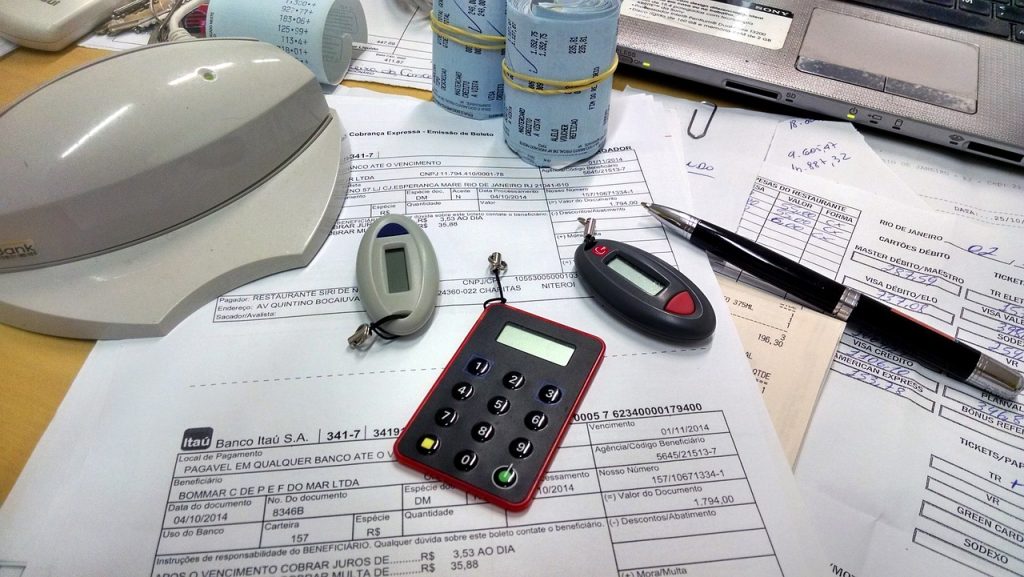
How to Achieve Supply Chain Optimization
Optimization. It’s a word that’s thrown around the business world quite a bit.
That said, ‘supply chain optimization’ is one term that you absolutely need to be familiar with if you want to run a successful business.
Not exactly sure what it is? No problem!
Get the full scoop on what supply chain optimization is, and why it’s important to your business’s health & stability, just below.
What is a supply chain?
A supply chain is “a network between a company and its suppliers to produce and distribute a specific product to the final buyer.”
The goal of any supply chain is, as the definition points out, to get the product into the hands of a consumer. But that’s just the basic idea.
If you look closely, there are noticeable differences between a well-thought-out supply chain model and a supply chain design that’s been hashed together without much careful planning.
That’s where supply chain optimization comes in. Unfamiliar with the concept? Keep reading!
What is supply chain optimization?
Supply chain optimization is, as the term suggests, the act of making improvements to your supply chain in order to cut costs, raise profits, and keep customers happy.
If your supply chain network is successful at giving your customers what they want when they want it, then you’ve got a solid foundation set. The next step is to reassess your supply chain design to see where expenses can be trimmed down without sacrificing the customer experience.
The end goal is to have a supply chain optimization model that achieves customer satisfaction at the lowest possible cost to your business. Supply chain optimization can be achieved by addressing a number of factors, including:
- Physical location/placement of inventory
- Manufacturing processes
- Transportation costs
- Distribution tactics
- And so on
Considering there are so many specific points you can focus on when optimizing your supply chain design, it makes sense that there are different approaches that have been developed to help tackle those different points effectively. More on that just below.
Local vs global approaches to supply chain optimization
Your supply chain network can be optimized in two general ways: local supply chain optimization or global supply chain optimization. Don’t be confused, the ‘local’ and ‘global’ parts aren’t geographic references.
The main difference between these two approaches is in their scale and scope. Take a closer look and consider all of the differences between the local and global supply chain optimization before jumping right into your supply chain design.
Local supply chain optimization
Local optimization is an approach to supply chain optimization that focuses on improving a single specific function of the supply chain network, without much consideration of how that might impact other parts of the supply chain.
For example, you may want to optimize the speed of distribution so that stores have a steady supply of goods for your customers to purchase. That might mean sending trucks out to make deliveries even if they aren’t filled to capacity. On the one hand, you’ll be achieving the goal you set out to reach – on the other hand, this can cause a rise in your cost of distribution.
As you can see, a local supply chain optimization plan is likely not the best long-term solution to developing a supply chain design.
Optimizing one area without thinking carefully about the potential effects on other areas can end up causing more problems than it solves. Instead, it’s better when used as a quick way to test out new ideas and see how they may impact other parts of the supply chain before moving forward with a broader and more permanent plan.

Global supply chain optimization
As opposed to the ‘local’ approach, global supply chain optimization is a strategy that does more to consider the potential effects that certain changes may have on each part of the supply chain.
Think of the ‘local’ approach as the act of spinning a single plate on a staff – it’s not so easy. Now imagine keeping several plates spinning – a task that’s even more difficult.
The trick with global supply chain optimization isn’t to reach for perfection. You can keep all of the plates spinning, but trying to keep them all rotating at full speed is nearly impossible.
The point: Don’t exhaust yourself trying to optimize every single part. Finding the perfect balance between all of the different areas of your supply chain design is unlikely to happen.
The goals are the same – to cut costs, raise profits, and keep customers happy. Do your best to optimize your supply chain network across the board, but just make sure that at the end of the day the savings you make by optimizing outweigh the resources put into optimization (primarily money, but also time and energy).
Though this all might sound a bit intimidating, there are techniques to help make supply chain optimization easier for you to achieve for your small business (including supply chain management software).
5 Supply chain optimization techniques
- Stay ahead of changes
- Stick to your strengths
- Strengthen collaboration
- Save time & use technology
- Search for ways to improve
1. Stay ahead of changes
Having a supply chain design that operates okay today doesn’t mean that it will last forever. In fact, we’re here to tell you that it won’t. You need to stay aware of changes to supply and demand in order to keep your supply chain network tuned and working optimally.
To help you do that, you can use POS systems to keep an eye on how your supply chain handles fluctuations in demand, and use that data to help predict future changes. Staying prepared for the future will keep you poised to react properly, and keep your customers satisfied and avoid stretching your budget out thin.
2. Stick to your strengths
We all would like to believe that we can handle things on our own. After all, if you want something done right then you’ve got to do it yourself, right? Not exactly…
Even if you’re somehow able to get every step of your supply chain done on your own, chances are you’re underperforming somewhere along the line. There’s no shame in outsourcing – in fact, completing certain tasks with outside help is one of the best techniques to add to your supply chain optimization model.
You got into your business because you’re good enough at something that you can make a living off of it. When it comes to your supply chain network, focus on your strengths and see where the help of third parties can fit in. They can help you cut your costs and, at the very least, will save you a bunch of time that you can put towards other areas of your business.
3. Strengthen collaboration
This is one of the most effective techniques to include in your supply chain optimization model. For example, integrating your manufacturing processes with your suppliers can help improve inventory control. Cross-referencing data from retailers with data from your manufacturers is an effective way of keeping up with demand.
With the power of supply chain management software, the mountains of data available from throughout your supply chain network can be made sense of. Ultimately, maintaining a high level of interconnectedness between the different areas of your supply chain will make optimization easier to tackle.
4. Save time & use technology
This is a general technique that has many specific ways to actualize.
You can incorporate supply chain management software, which will help you make sense of the many sources of data available from different parts of your supply chain.
You can improve your customer service by giving consumers the ability to communicate directly with you through mobile technology.
You can start using POS technology together with touch-screen technology to give employees improved field sales capabilities.
The list is ‘virtually’ endless. The bottom line is, technology (whether supply chain management software or otherwise) is a fantastic way for you to boost your supply chain optimization.
Side note: Here at Become, we use technology to help streamline our operations as well.
With the power of financial technology (FinTech), we’re able to quickly assess a small business’s financial profile and accurately match it with the optimal lender.
This saves business owners time, stress, and money in their efforts to obtain the financing they need to become more.
5. Search for ways to improve
Supply chain optimization is an ongoing process. Becoming complacent with the status quo is not the way to go! Suppliers and manufacturers shouldn’t be relied on to give you personal feedback on how to save your business money. There’s always room for improvements to be made, and it’s on you to continue looking for them.
Be sure to review your supply chain design on a regular basis. This will help keep each of the different parts of your supply chain network in line with one another, make sure they’re meeting all necessary regulations & standards, and also nudge them towards improving overall efficiency.

Step-by-step guide to supply chain optimization
- Establish a supply chain council
- Sync up with tier 2 suppliers
- Streamline processes
- Strengthen relationships with suppliers
- Consider total cost of ownership
- Cut inventory costs
- Plan for demand
- Review, assess, and repeat
1. Establish a supply chain council
The efficiency and functionality of your supply chain network will rely heavily on having the right leaders in place. Without a set of responsible individuals to steer your supply chain in the proper direction, the ship can quickly veer off course and land your business in some deep and murky waters.
Having a supply chain council made up of upper and lower level employees will help improve communication and organization, thereby keeping your supply chain in synchronization with the broader goals of your business.
2. Sync up with tier 2 suppliers
Your tier 2 suppliers are the suppliers who supply…. your suppliers! Let’s break that down.
Your suppliers, who provide you with goods or services, have suppliers of their own. That’s where they get their own supplies – often times raw materials, sometimes specialized components, and occasionally even services.
Successful negotiation with a tier 2 supplier can effectively reduce the cost of goods that your suppliers are faced with, which can have a trickle-down effect that saves your business money in the end.
3. Streamline processes
Having ‘working’ processes in place is not enough if you’re aiming to create a supply chain optimization model. Much of the time when you zoom in on the smaller details of the larger picture, you’ll find that there are places in your supply chain network that can be trimmed down or straightened out.
That might mean consolidating multiple tasks under one roof, completely eliminating certain expenses, updating or upgrading certain aspects of production, automating with the help of technology, integrating with other digital systems to track & collect data, and so on.
Side note: Upgrading machinery or incorporating automated systems into your supply chain network usually come with upfront costs that may put a strain on your finances.
Business loans can help cover those costs so that you can optimize your supply chain design today, and make more money in the long run.
4. Strengthen relationships with suppliers
Suppliers are integral components of your supply chain network. Maintaining a healthy relationship with open lines of communication flowing both ways is absolutely necessary in terms of supply chain optimization. That goes well beyond the initial signing of a deal.
A healthy and stable supplier relationship includes setting common goals, agreeing on how to reach those goals, continuous performance assessments, and an established mechanism for dealing with discrepancies between parties.
5. Consider total cost of ownership
When selecting suppliers, many business owners make the mistake of only considering price. We say that it’s a mistake because the suppliers’ prices are not an honest indication of what you’ll actually end up spending on their services.
The total cost of ownership (TCO) goes beyond the upfront costs of supplies or services and includes all of the potential costs such as warehousing, transportation, and other operational costs. Keeping a healthy relationship with your suppliers will assist in calculating the TCO, that way you can begin reducing expenses whenever and wherever possible.
6. Cut inventory costs
Have you ever heard the saying “there’s no such thing as too much”? Well, whoever said it, they were wrong. Keeping unnecessary amounts of inventory can run your business a pretty penny.
Think about the sheer space you need just to hold onto the goods. Then tack on the costs involved in keeping it stored properly, then accessing the inventory as needed, and so on. Monitoring your demand will help you place properly-sized orders so that your inventory isn’t bursting at the seams.
7. Plan for demand
Having even a fairly accurate idea of how your demand is likely to fluctuate in the future can be an immense help towards your supply chain design.
First and foremost, predicting demand for your goods or services will help your supply chain council determine the proper amount(s) of inventory to keep on-hand. You won’t want too much of an unpopular item, and you won’t want to be shorthanded when tons of orders come in for a more popular product.
Additionally, planning ahead will help your rate of production stay in line with that ever-fluctuating demand. For example, the changing of the seasons may impact your demand. In that case, you can reduce your workforce in the slower months and bring in extra help during the faster months.
8. Review, assess, and repeat
“Good enough” is never good enough when it comes to supply chain optimization. Your supply chain design should be under constant scrutiny. That means your supply chain council should continuously be monitoring your network and looking for places to improve efficiency.
Being on alert at all times will help you maintain a strong supply chain network and avoid the risks that come along the way, such as theft and fraud. If you haven’t done so already, you should also consider incorporating a small business cyber security strategy into your risk-avoidance plan.
Final thoughts
There you have it! With the tips and strategies listed in this guide, you’re already well on your way towards creating a supply chain optimization model that will take your small business to new heights.
Use these tricks of the trade to keep your business operating at its fullest capacity – and keep this page bookmarked so you can come back and freshen up on your supply chain design later on down the line!





